Species distribution
Type of resources
Available actions
Topics
Keywords
Contact for the resource
Provided by
Years
Formats
Representation types
Update frequencies
status
Scale
Resolution
-
-

Distribution of predicted suitable habitat for six cold-water-coral, six deep-water fish and one sponge species, on the North Atlantic (18°N to 76°N and 36°E to 98°W). For each species, predicted habitat distribution was obtained for present-day conditions (1951-2000) and for the future climate refugias, i.e. the areas that were predicted as suitable both for present-day and forecasted future (2081-2010) conditions. The dataset gathers 26 raster layers created on the same grid of 25km * 25km resolution, downgraded from source layers (3km *3km resolution) that were created within the work package 3 of EU ATLAS project. The presence (value=1) of climate refugia and the relative cover (value ranging from 0 to 1) of present-day suitable habitat was extracted in gridsquares. This dataset was built to feed a basin-wide spatial conservation planning exercise, targeting the deep sea of the North Atlantic. The goal of this approach was to identify conservation priority areas for Vulnerable Marine Ecosystems (VMEs) and deep fish species, based on the distribution of species and habitats, human activities and current spatial management.
-

-

This map presents NASC values (Nautical Area Scattering Coefficient) attributed to sardine (Sardina pilchardus) in 2019, 2020, 2021 and 2022, highlighting the regional abundance gradient of this species. The map was created through IDW interpolation applied to the results of the MEDIAS surveys (MEDiteranean International Acoustic Survey) conducted in the Mediterranean. Detailed information on the methodology for acquiring and processing acoustic data is available in the MEDIAS handbook. Additionally, details on the interpolation method used are provided in the report of the 16th working group meeting.
-
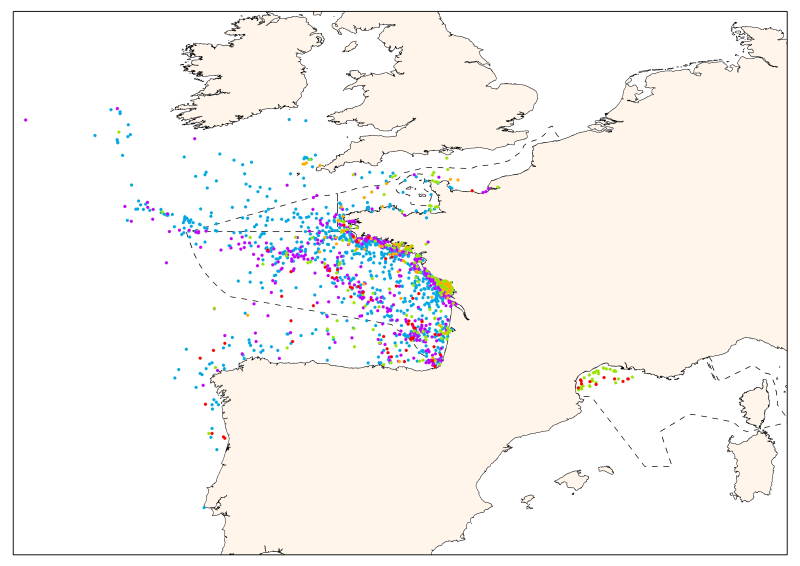
Distribution of opportunistic observations of Bottlenose Dolphins, Striped Dolphin, harbor porpoise, pilot whale and common dolphin, on all fronts of France between 1971 and 2009.
-
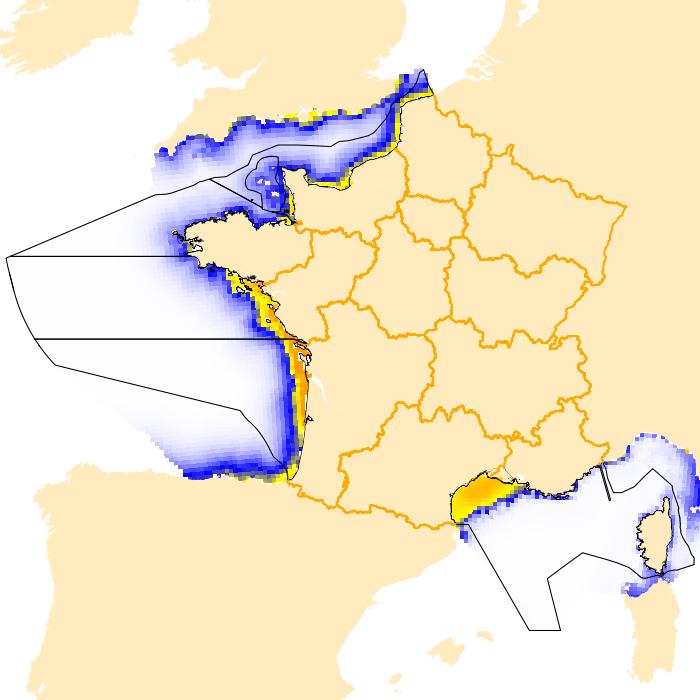
-
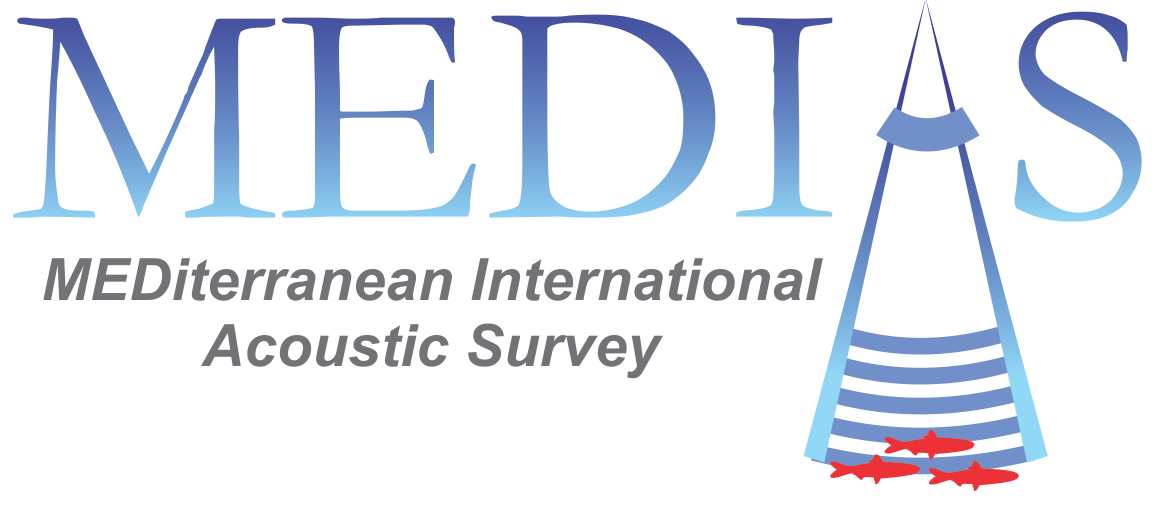
This map presents NASC values (Nautical Area Scattering Coefficient) attributed to anchovy (Engraulis encrasicolus) in 2019, 2020, 2021 and 2022, highlighting the regional abundance gradient of this species. The map was created through IDW interpolation applied to the results of the MEDIAS surveys (MEDiteranean International Acoustic Survey) conducted in the Mediterranean. Detailed information on the methodology for acquiring and processing acoustic data is available in the MEDIAS handbook. Additionally, details on the interpolation method used are provided in the report of the 16th working group meeting.
-
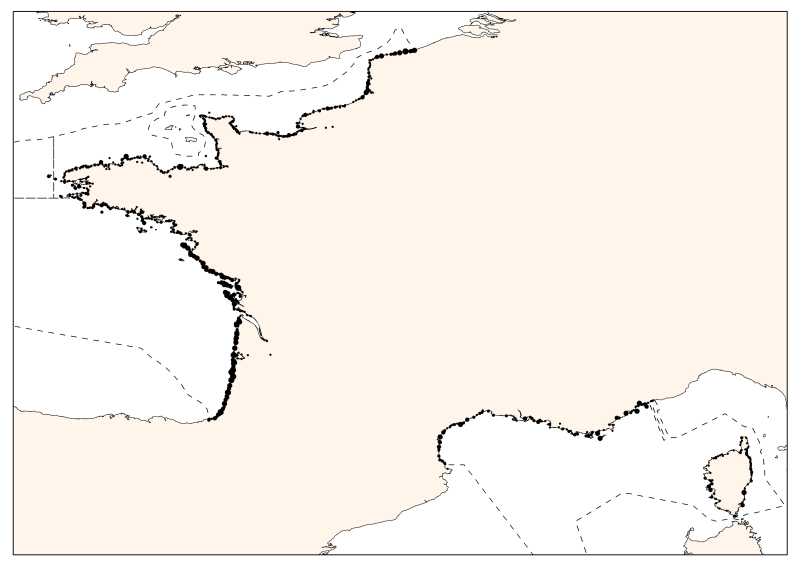
Spatial distribution for strandings of common bottlenose dolphin, striped dolphin, harbor porpoise, pilot whale and common dolphin, on the entire French coast between 1971 and 2009.
-
Annual time series of eel recruitement, (2005-2014) • Time series of glass and yellow eel for those rivers used in the annual ICES advice to the EU • Location, data availability and long term annual (LTA) eel recruiment per river mouth
-
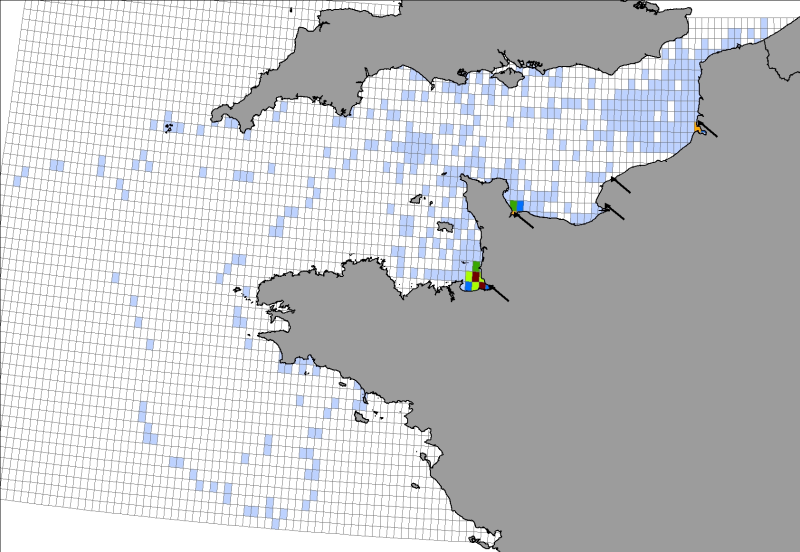
Location distribution per grid cell of 8 young harbor seals (Phoca vitulina), followed by Argos tags (between 2005 and 2008) along the English Channel coast following rehabilitation at the care center CHENE.
 Catalogue PIGMA
Catalogue PIGMA